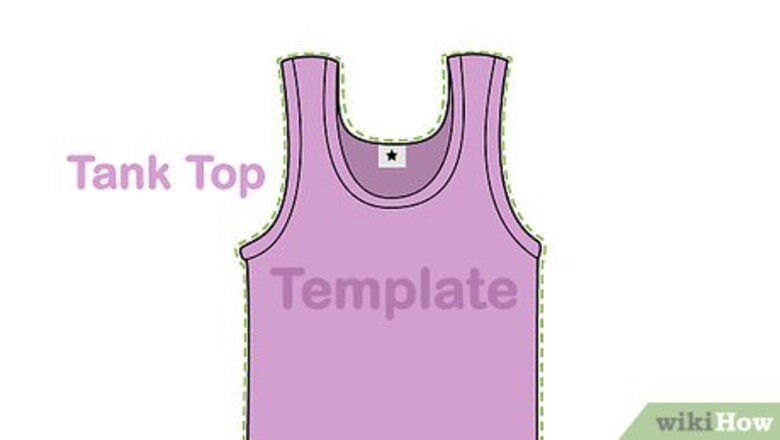
views
Making a Basic Tank Top
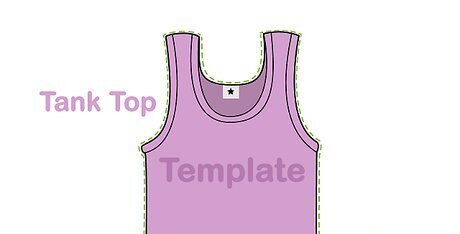
Find a tank top to use as a template. Since you'll be using it as a model, make sure that the fit is just right and looks good on you. If you don't have a tank top to use as a template, don't worry. You can still make a tank top.
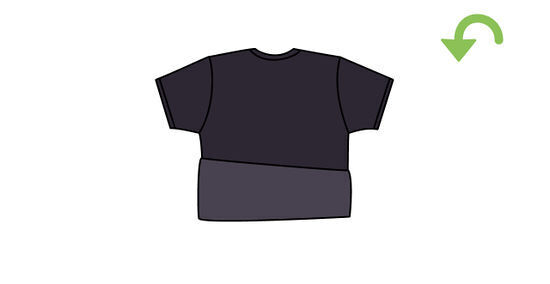
Choose a t-shirt you won't mind cutting up and turn it inside out. The shirt does not need to fit well, unless you want a fitted tank top. If the shirt is a brand new shirt, wash and dry it first. Fabric tends to shrink after you wash it the first time, and you want the shirt to be the right size before you start working on it.
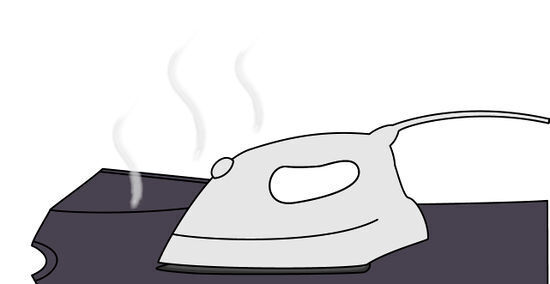
Iron both shirts to remove any wrinkles. Even if your shirts are already nice and smooth, it might be a good idea to do this. Ironing will smooth the fabric and make it easier to work with.
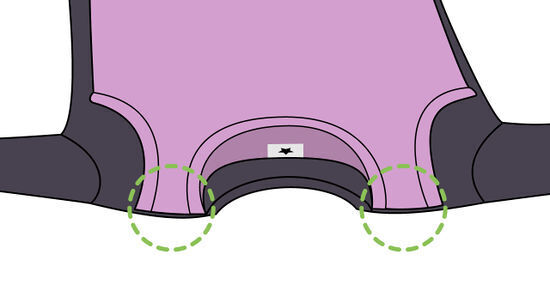
Place the tank top on top of the t-shirt, and align the shoulders. Lay the t-shirt flat on a table, then lay the tank top over it. Make sure that the shoulders of the tank top are aligned with the shoulders of the t-shirt. Also, make sure that the front of both shirts is facing upwards.
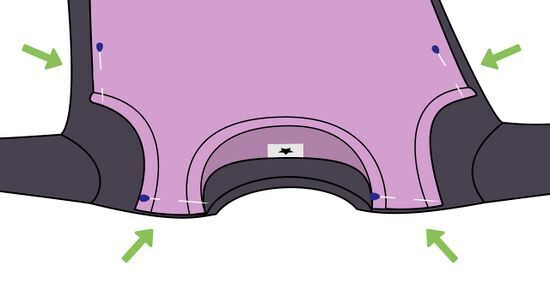
Pin the tank top to the t-shirt to keep it from moving. Place straight pins all along the edges of the tank top. Take care to pin all the way through all layers of both shirts. This will keep the shirts from moving, and make your cutting more even.
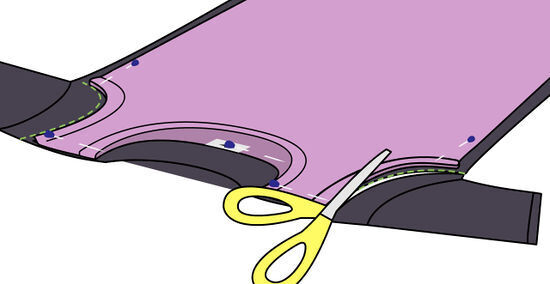
Cut the t-shirt, using the tank top's armholes and neckline as a guide. If you'd like a finished hem around the armholes and neckline, leave a ½-inch (1.27 centimeters) seam allowance. A finished hem is not a requirement for t-shirt tank tops, as the fabric does not fray. A finished hem will look nicer, however. If you don't have a tank top to use as a guide, cut the sleeves and collar off of your t-shirt. Consider folding the shirt in half before cutting it, so that both sides will be even.
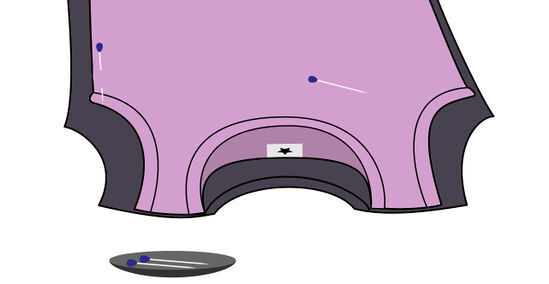
Unpin the tank top from the t-shirt and put it away. Take the pins out and put the tank top away. Make sure that the t-shirt is still inside out at this point. You won't be turning it right side out until the very end.
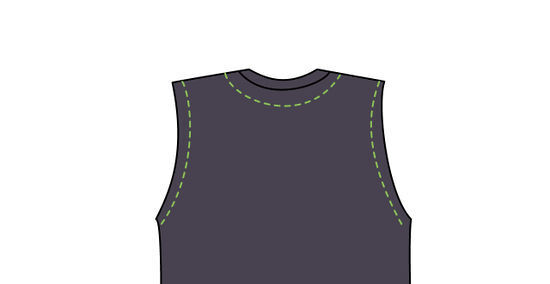
Cut the front neckline and armholes wider, if desired. Some tank tops will have a lower neckline in the front than in the back. The same goes for the armholes. Don't trim too much off, if you plan on having finished hems; remember to leave a ½-inch (1.27 centimeters) seam allowance.

Fold the cut edges down, pin them in place, and press them flat with an iron. Fold the edges down by ½-inch (1.27 centimeters). Secure the folds with straight pins, and press them flat with an iron. When folding, make sure that you are folding towards the outside, not the inside. If you'd like the edges to be raw and un-hemmed, you can skip this step. T-shirts are made from jersey material, which does not fray.
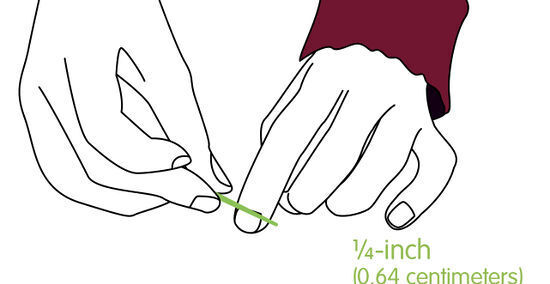
Stitch the folded edges down using a ¼-inch (0.64 centimeters) seam allowance. You can sew by hand or use a sewing machine for more professional, durable stitches. If you are using a sewing machine, try to use a stitch intended for knit fabrics. It looks like a straight stitch, except that it is broken up by a V every few stitches. When you are done sewing, remember to tie the ends of the threads off into tight knots, and to snip the excess tail ends off.
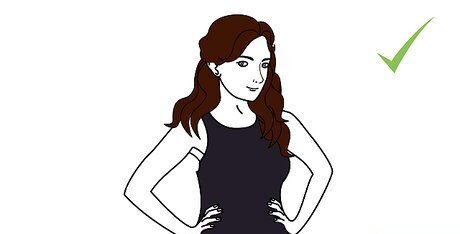
Remove the pins, turn the tank right side out, and try it on. The tank top will be a little loose, unless you used a fitted t-shirt or trimmed the sides down.
Making a Racerback Tank Top
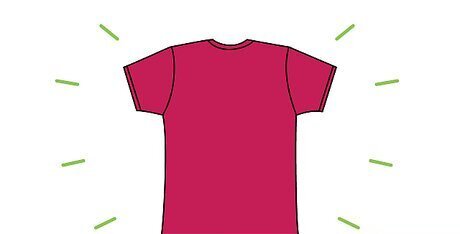
Start with a t-shirt you won't mind cutting up. Make sure that the shirt is washed. If this is a brand-new shirt, throw it into the washer and wash it; be sure to dry it afterward. Brand new shirts may shrink a little bit after you wash them the first time. You want the t-shirt to fit you properly before you begin cutting it and turning it into a racerback. A racerback tank top has wider armholes in the back, leaving a skinny band of fabric between the shoulder blades.
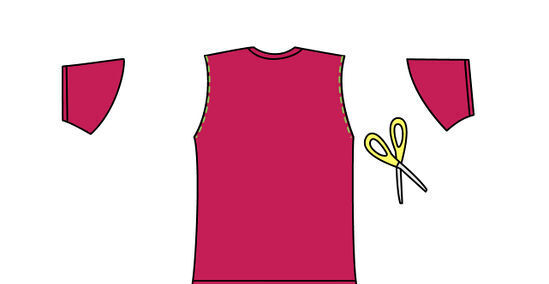
Cut the sleeves off. Start from just under the armpits, then cut straight up towards the shoulders.
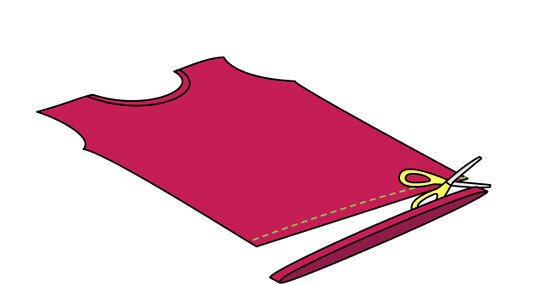
Cut the hem off your shirt, then snip it to make a long strand. Cut right along the bottom hem of your t-shirt, using the stitching as a guide. When you are done, you will end up with a large, fabric ring. Cut this ring apart, close to one of the side seams, so that you end up with a long, fabric strand. You will use this to decorate the back of your tank top.
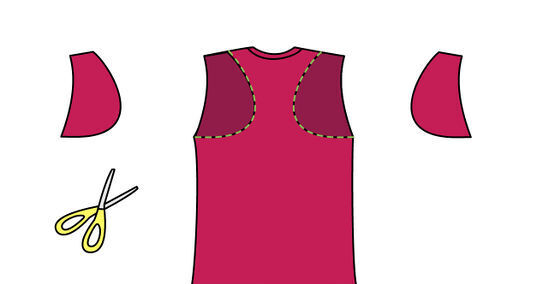
Trim the back of the armholes into a racerback shape. Turn the shirt over so that the back is facing you. Trim the back of the armholes further until there are only a few inches of fabric between them. Be careful not to cut the armholes on the front of the shirt. Make sure that you cut the same amount from each side of the shirt. Cut the armholes deep. They should be a few inches apart when you are done.
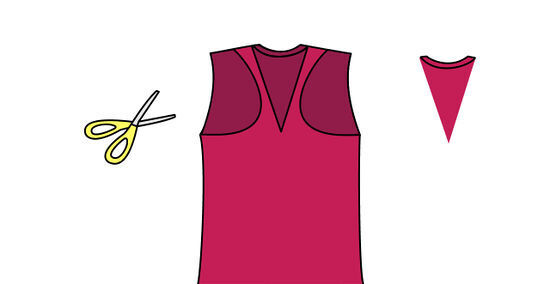
Cut a deep V-shape into the back of your shirt. Find the back center of the neckline, then cut a deep V-shape. Keep the point of the V-shape between the armholes. This will help keep the fabric from bunching up when you tie it up. Do not cut the front of the shirt; you are only cutting the back. Racerbacks have a plain collar in the front. If you prefer a plain racerback, you can skip this step, and wear your racerback. The next few steps will teach you how to make a fancier racerback.
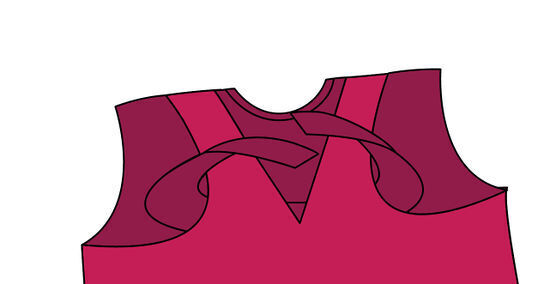
Tie one end of the fabric strand to the bottom of the V-shape. Find the bottom of the V-shape and measure up a few inches/centimeters. Take the fabric strand you cut from the hem of the shirt earlier, and tie it around that point. The fabric strand should be gathering the fabric between the two armholes on the back of your shirt,
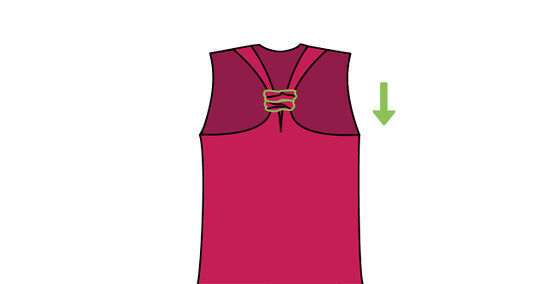
Wrap the strand around the fabric moving downward. Try to wrap as tightly as you can, so that the fabric between the armholes turns into a "rope." Stop when you reach the bottom of the armholes.
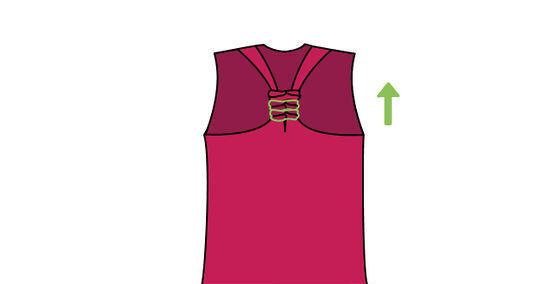
Wrap the strand back towards the top of the shirt and secure the end. You can do this simply by tucking the end under the wound fabric. For extra security, tie the two ends of the strand together into a tight knot first.
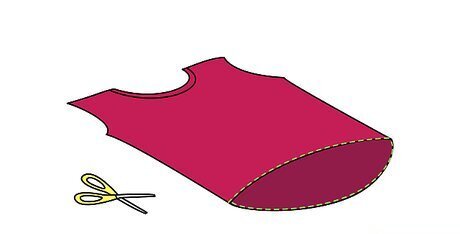
Consider trimming the bottom of your tank top to give it a high-low look. Spread the shirt down sideways, so that you see only the side seam, the armhole, and half of the front and back. Find the folded front side of the shirt. Measure up a few inches, then start cutting downwards towards the back of the shirt. When you are done, your shirt will be shorter in the front, and longer in the back.
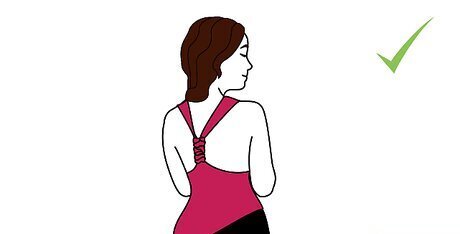
Wear your racerback. You do not need to worry about hemming, because t-shirt fabric does not fray. Racerback shirts are perfect for layering over bandeau tops and for working out.


















Comments
0 comment